According to my fellow country-man Goethe, the Gretchen question always goes straight to the core of an issue. In this case the issue is entitled Plant-Based Monster Trucks. The title alone perfectly subsumes the recurring culture wars that are happening around us now. So the question “Now, what's your stance on comics” comes in handy, and me, a latitudinarian, but also a normie, would usually go with Scott McCloud's seemingly comfy definition of non-sequitur comics, as they once were so beautifully executed in Sasaki Maki's Ding Dong Circus (2015).
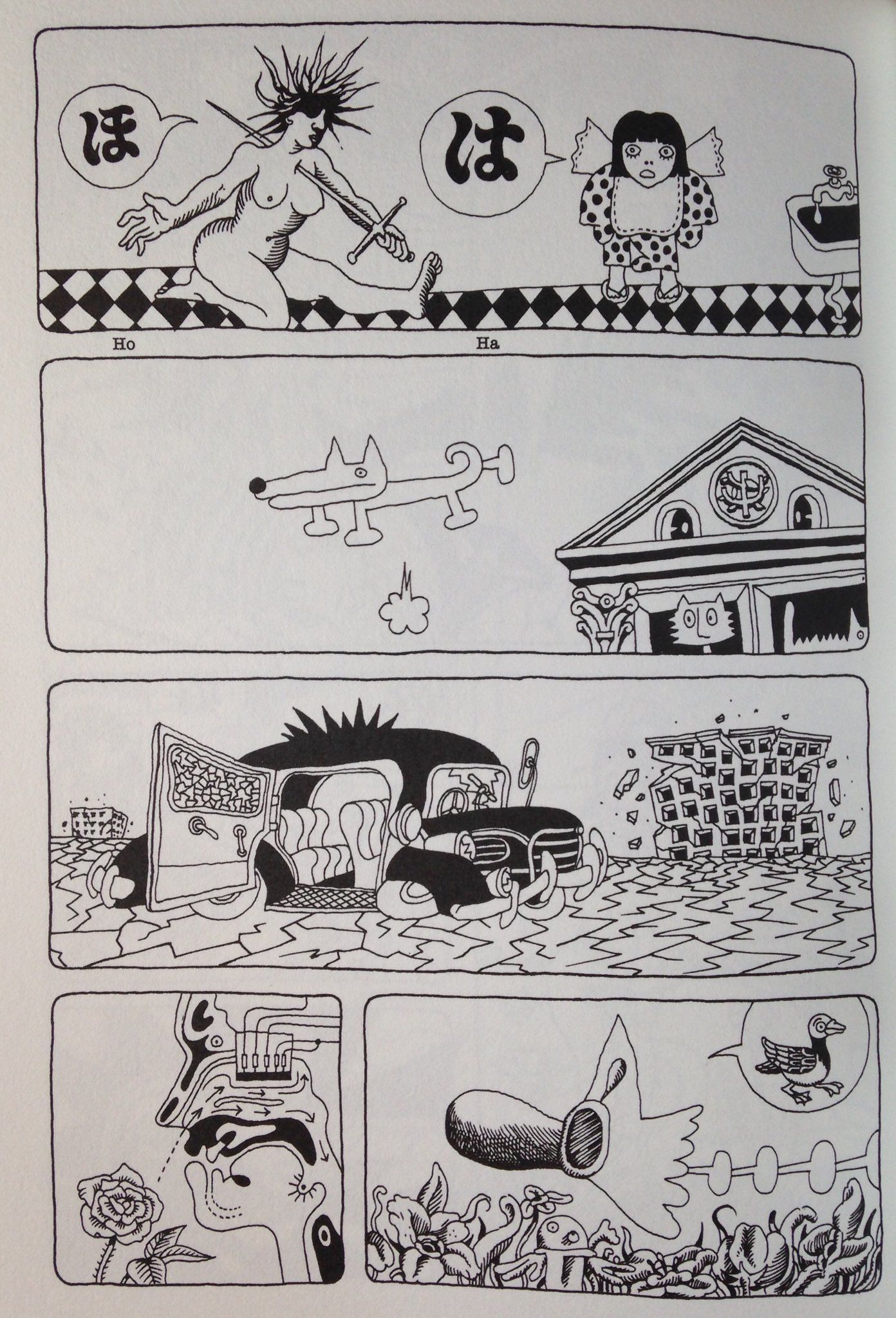
The famous Garo avant-garde artist is not an easy pill to swallow for those preferring a straight story. Maybe that was the reason David Lynch chose chose that phrase as the title for a movie offering a rather simple way of accessing his œuvre, compared to the rest of his output.
But, and as Chris Gavaler already pointed out, “So then a non-sequitur produces no closure at all — and so isn’t really type of closure, but is the absence of closure.” (I'll spare some of you from the rabbit hole that opens up when comics theorist Neil Cohn joins that conversation unfolding in the comments below Galaver's statement, insisting “that comics are not defined by any specific combination of images (in or out of sequence) and text.” Bam.)
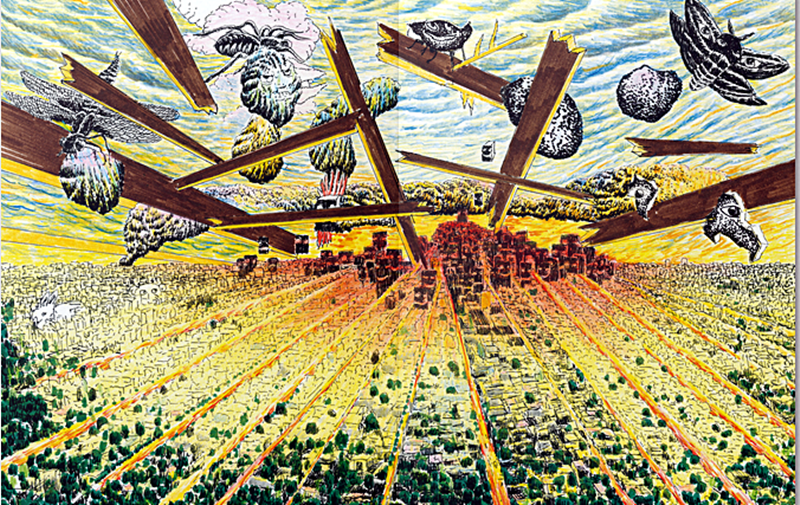
But why is your comics 'n kinship dissector for hire asking such diverging things, and not coming to the actual point? Because the main crux some people might have with Plant-Based Monster Trucks is its proudly exhibited absence of words, and — at least at first sight — no existing connection between the single illustrations.
That, of course, will drive self-appointed experts and purists, up the wall, since even Drifter (2017), Anna Haifisch's collection of single page illustrations, featured some abstractions of sounds, though they were placed underneath the drawings, a re-imagining perhaps of Hal Foster. Still, she showed her devotion to tell a somewhat linear story. (Haifisch, by the way, also recently released a zine at Nieves press from Switzerland, which are not only publishers of grassroots stuff as Plant-Based Monster Trucks, but also print material by Sonic Youth's Kim Gordon, artsy mangaka Yuichi Yokoyama, and filmmaker Harmony Korine.)
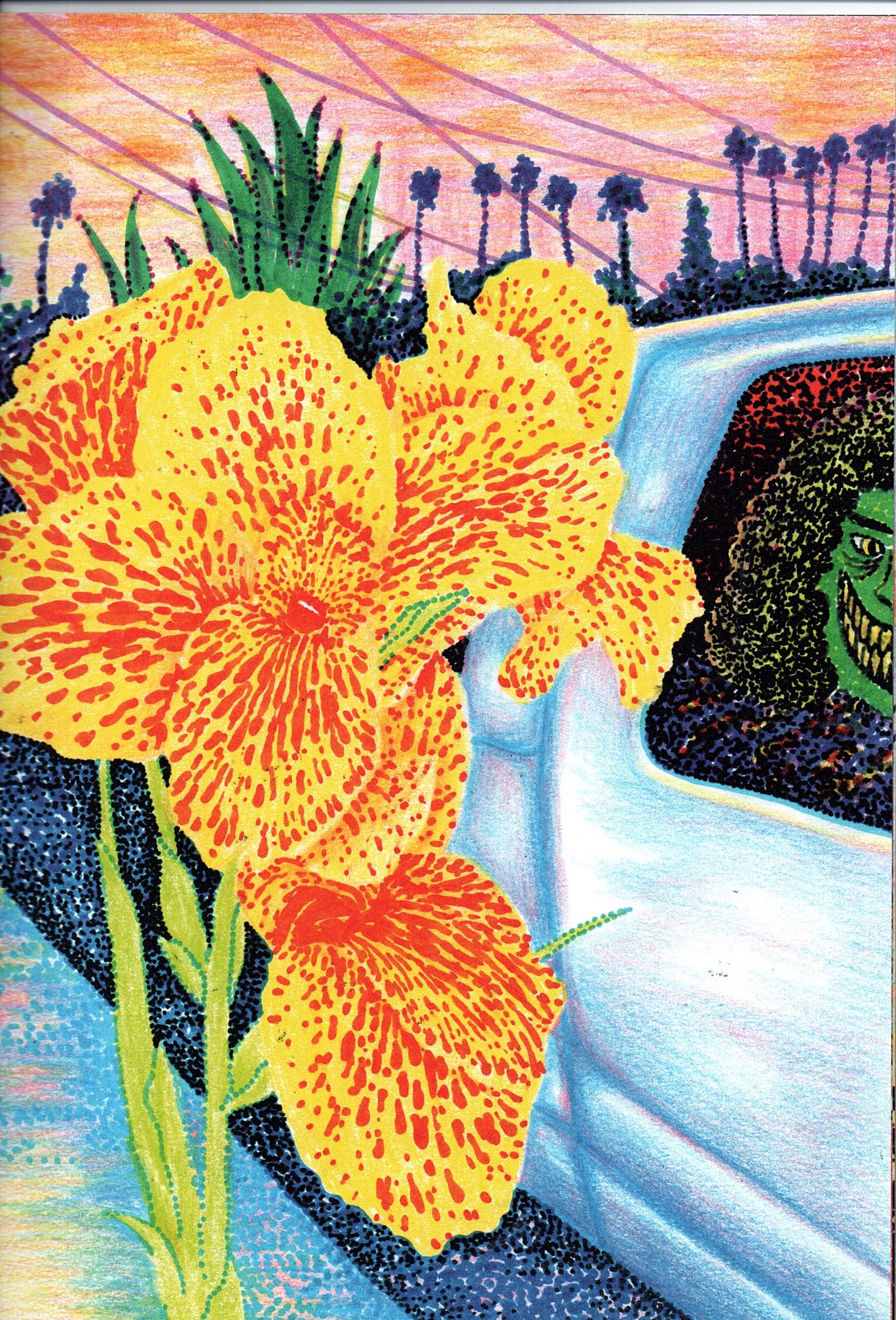
Well, at least this not-comic about cars in the wild and elsewhere by the duo of Lina Müller and Luca Schenardi is clearly pointing out its intention of providing readers with closure, by using the technique known as pointillism in overwhelmingly numbers, as it was formerly introduced to the world of painting by Georges Seurat and Paul Signac. I appreciate that said term intentionally saw creation by critics looking to make fun of those artists, but it later lost its snarky meaning and became a trademark. So, bye bye critics and hello funny books.
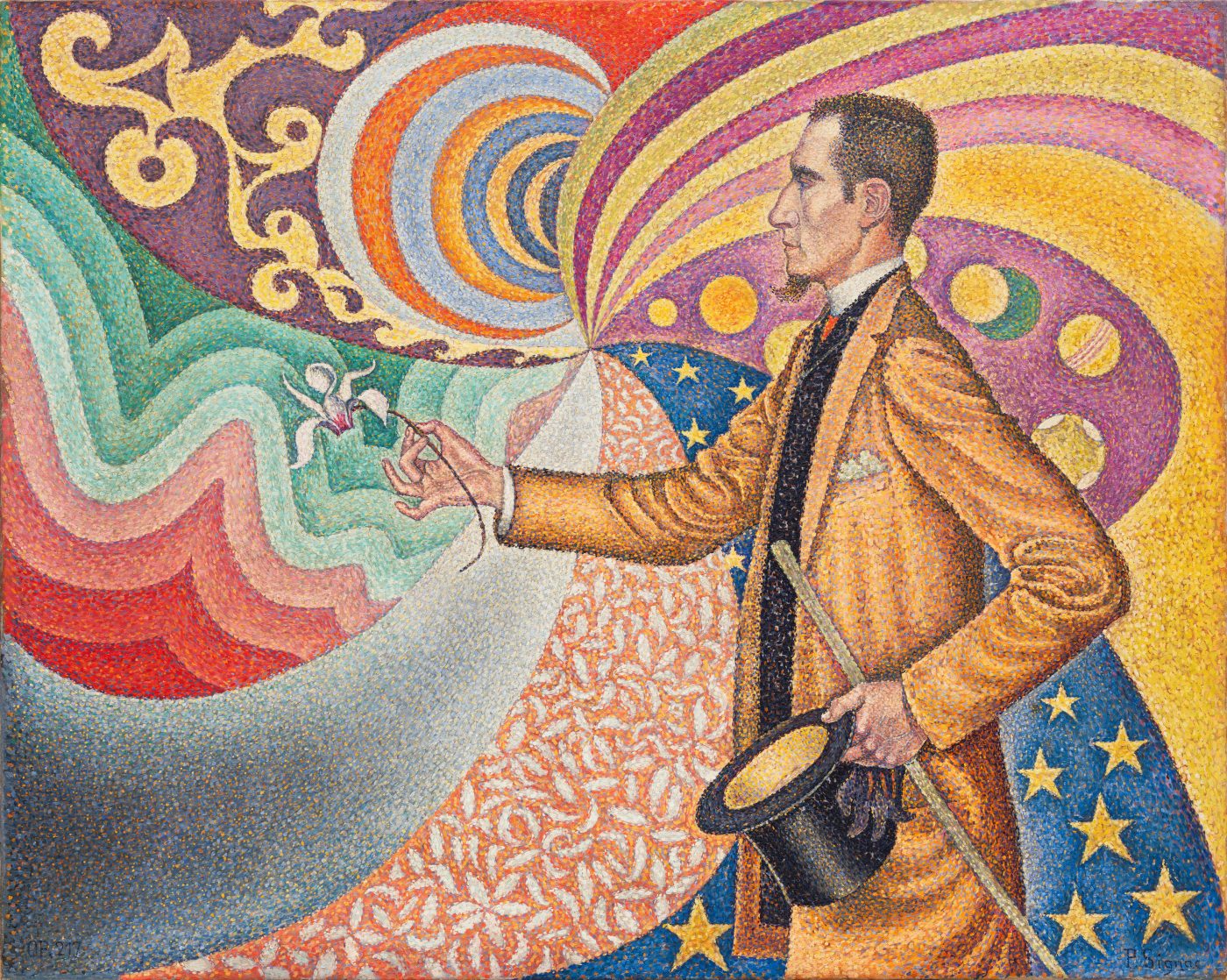
(Apropos pimping things up by infusing fine art into common picto-fiction, here's one of the covers from the Avengers Art Appreciation Month after Georges Seurat.)

Furthermore, and generously construed, can these painters perhaps be seen as an inspiration to some of the rad cover art Warren Kremer likely did for Little Dot (which æsthetically operates on similar terms as Müller's and Schenardi's book in its childlike fascination with objects of all kind)?
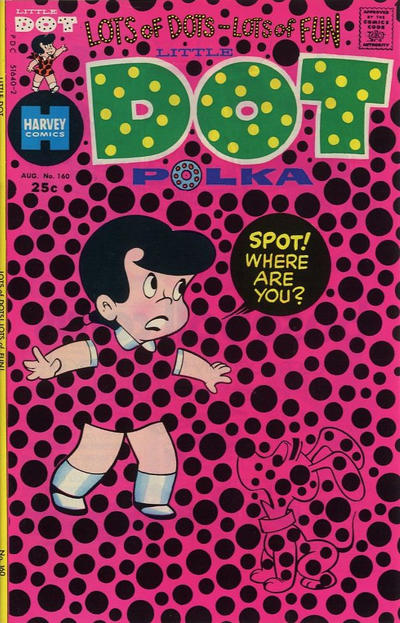
However, what other crashes and clashes can be witnessed in this panopticon of private transport? If you turn your eyes to the back cover, you'll discover the book's title divided in two fonts: the first part, devoted to the natural aspect of the title, comes in yellow letters with lots of orange points inserted, reminiscent of the beautiful beaches conjured by the Geisser sisters, aka KIIN for C'est La Surf (2018) – and even more so in the accompanying and riso-printed card set How To Walk On Sandy Beaches, while fear and technology arrive in a black metal-driven type of lettering in black and green, or something that Johnny Ryan would use aggressively on Prison Pit (2009 - 2018).
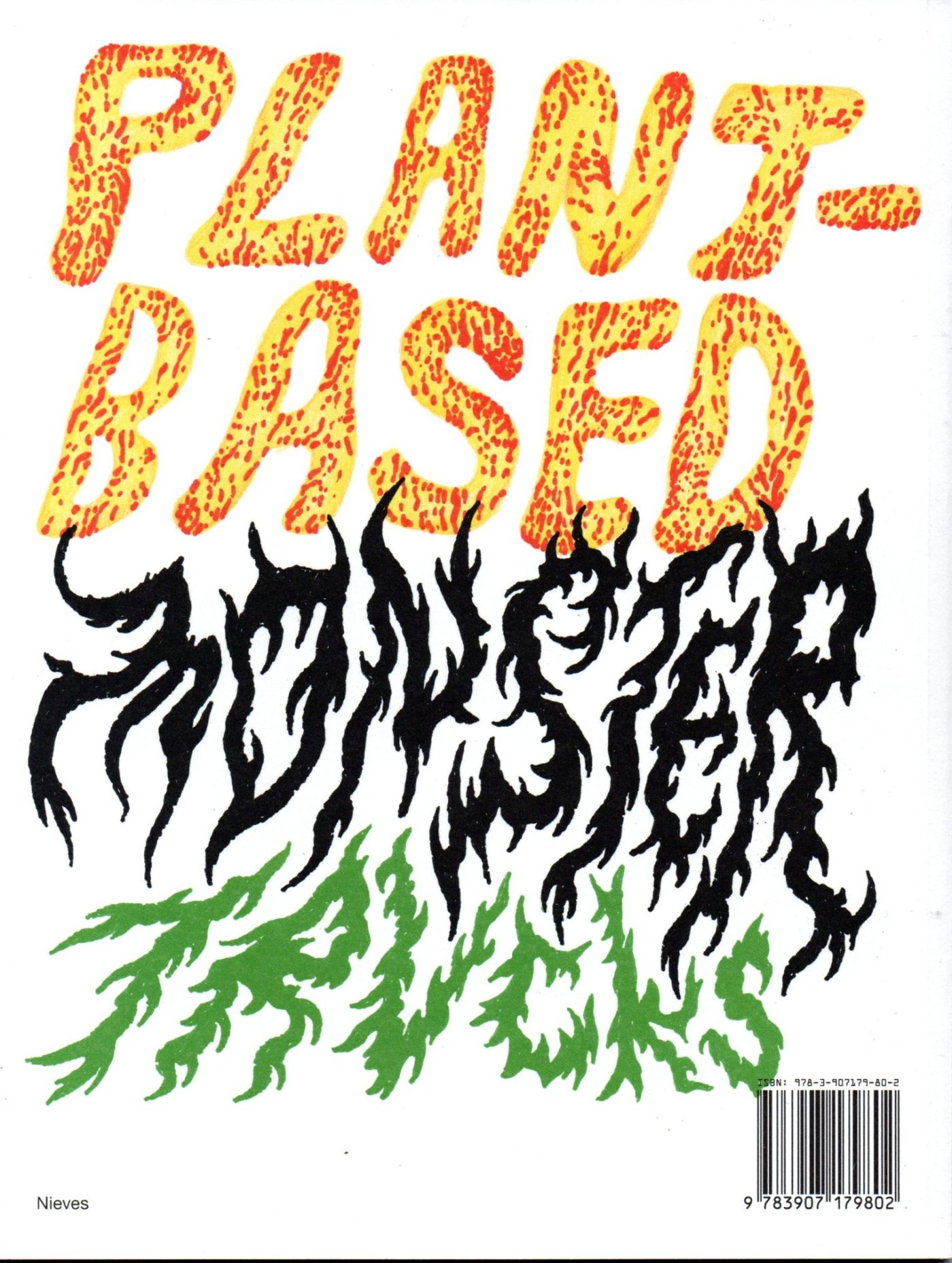
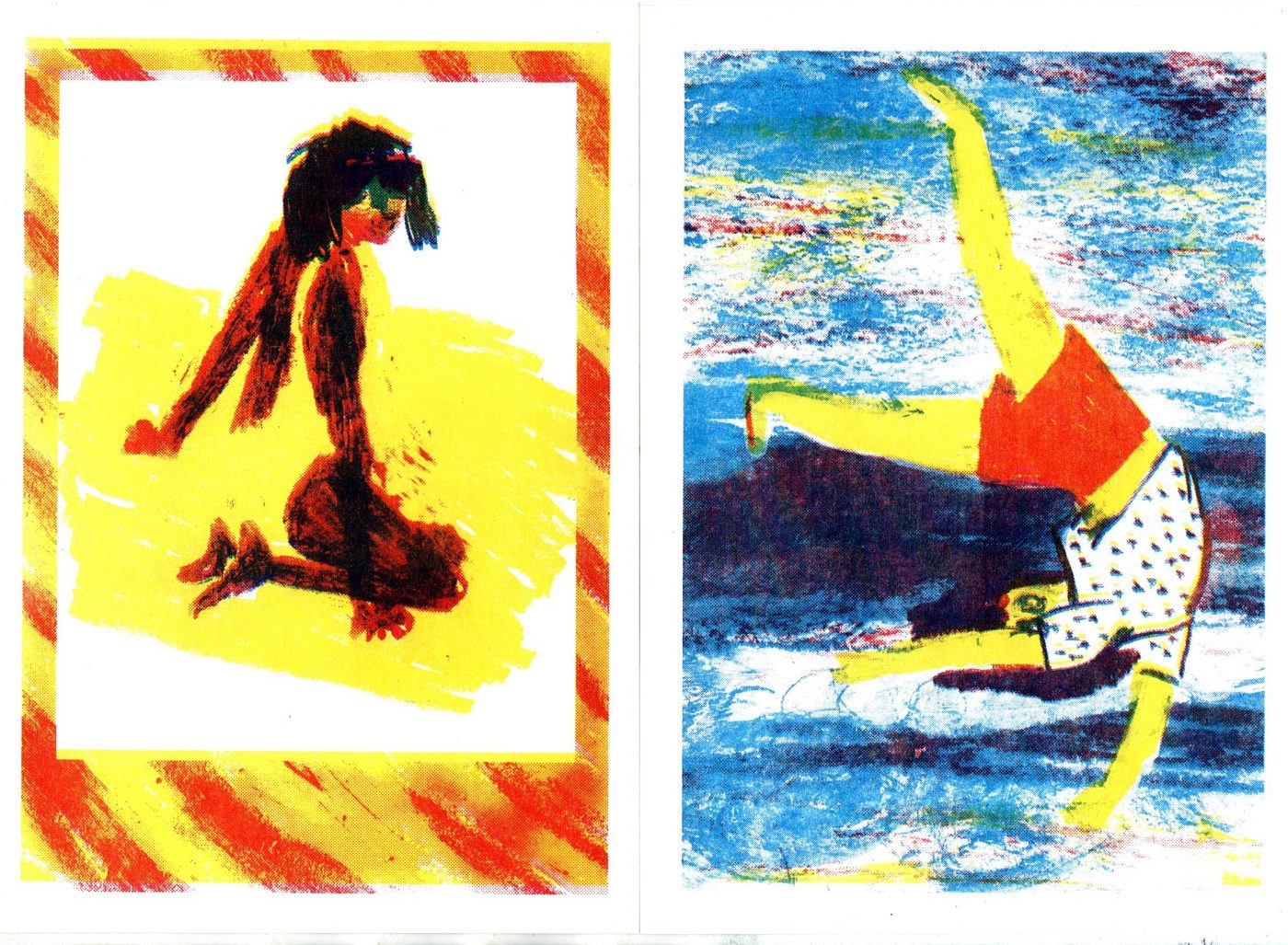
Those font types provide the right setting for a double splash citing a Zardoz (1974) head hovering over a Pushwagnerian soft cityscape (1969-1975), subtly claiming an end to the civilization we know, but no longer can or will afford to maintain. And so it goes, we also drive in massive cohorts into the abyss-like jaws of voracious giants wearing massive golden chain necklaces like a tech bro, sometimes accompanied by wolves on the seats next to us, or observe cactus creatures rising while we still try to mangle it all down like an enormous wheel-powered lawnmower man, until nature — i.e. a happily smiling cactus — takes over and provides his blunt-smoking gang with a joyride.
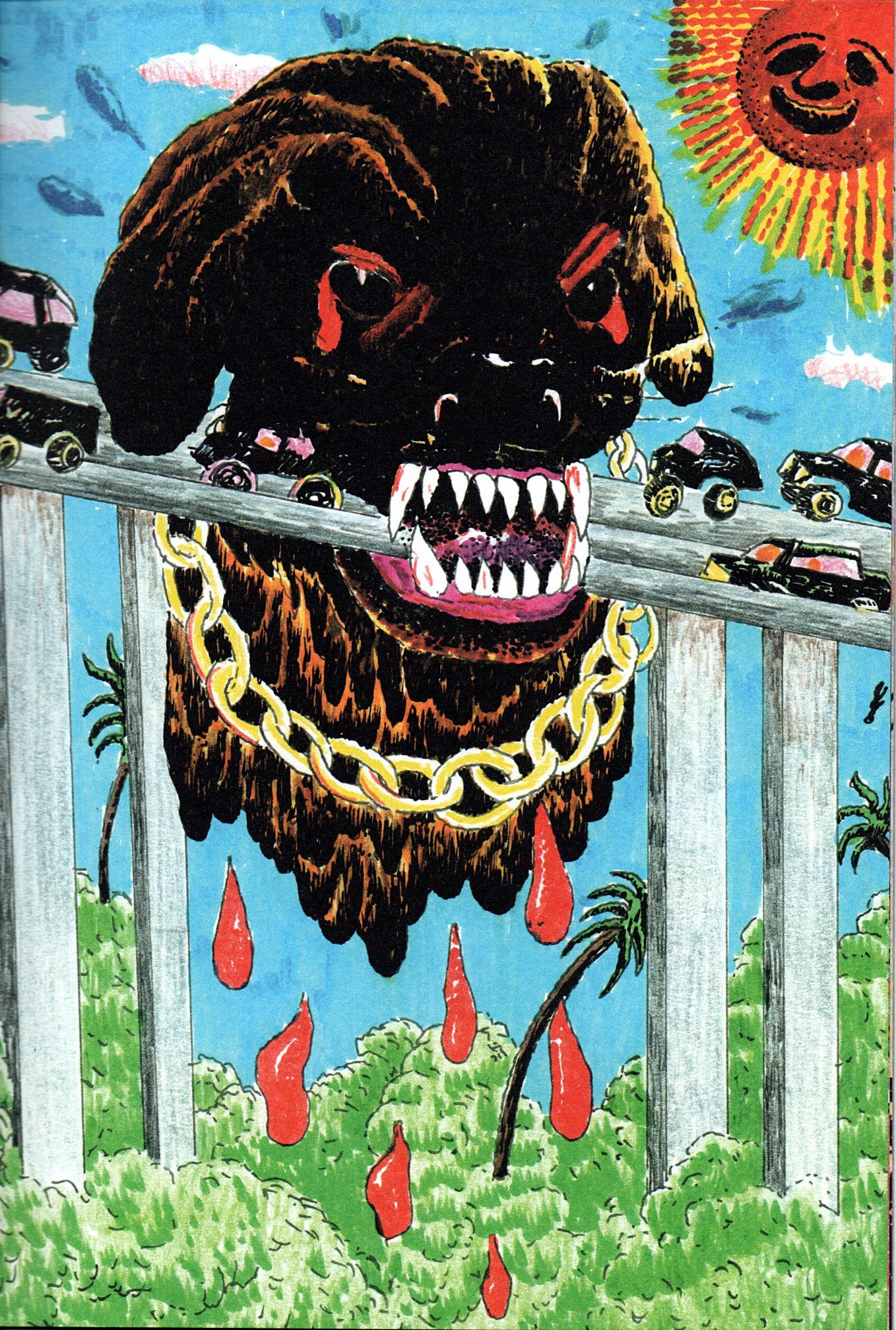
We furthermore enter gardens with rarely-seen beautiful flowers, that dangerously outshine the monstrosities covered by it, and finally end up tipsy in a night club or bar, appropriately dressed for the occasion, and follow the doings of a bone-grabbing brute in a corner while wearing a fear-inducing mask that's reminiscent of ones we've already met, thinking once more about reoccupying of the archaic. By passing motorway bridges, where fires have been lit underneath, we'll find a last resort in a car-centric arrangement. And when those dreamy beach scenes finally appear, don't look upwards, because a leviathan rears its ugly head from the depths of the blue sea to devour those living in sin, behind a crying sun, watching in despair.
Adding to these post-prosperity visions and their anarchic strength is an art brut coloring and drawing alike, and the points literally being made only intensify the intended message. Also it's a kind of connect the dots on an advanced level, which makes another point (sorry!) for the induction thesis, or, if you will, closure.
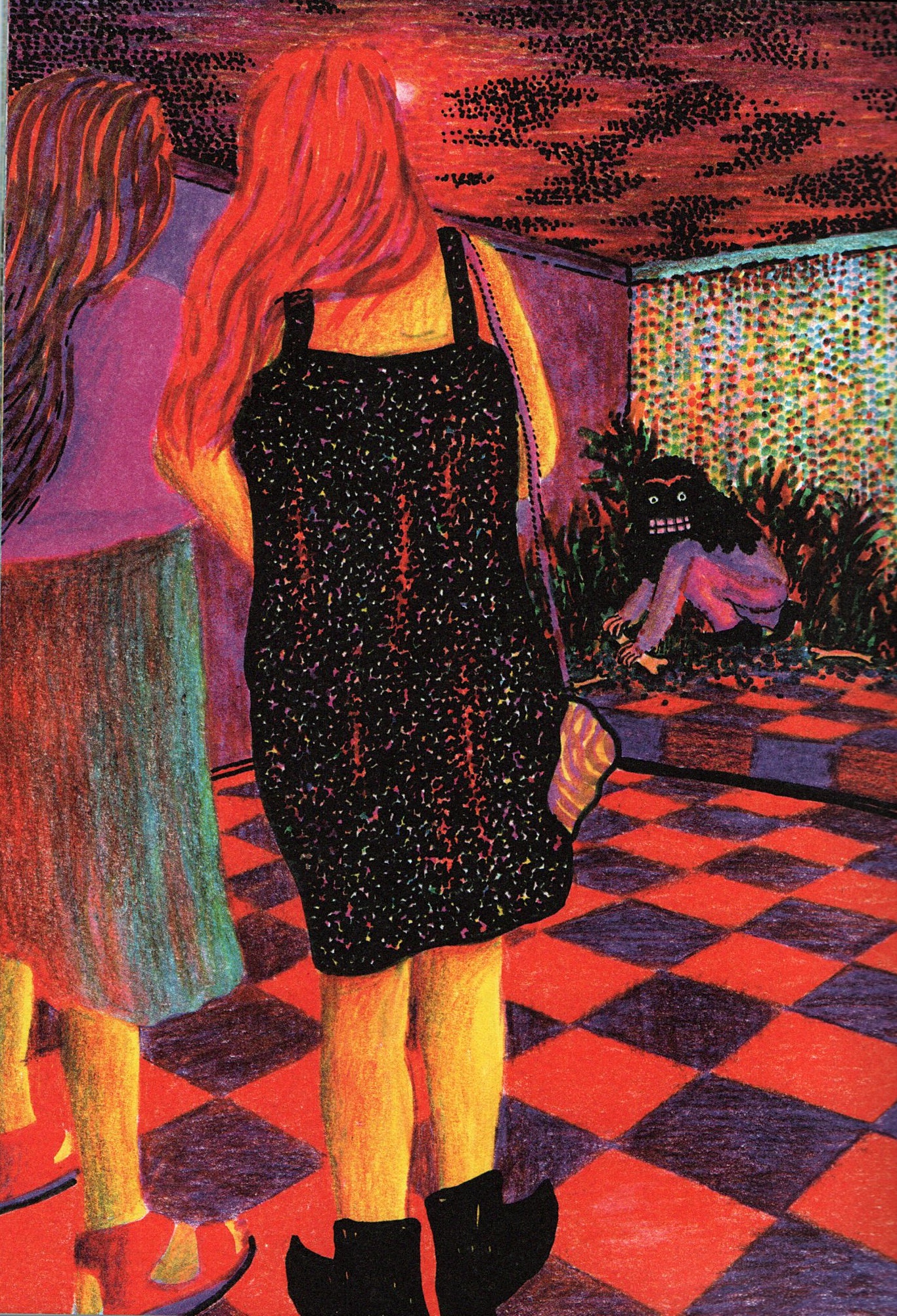
So what we have here are stills from a movie like La Jetée (1962), where an end is painfully foreseeable, but as the veneer of democracy starts to fade, we are no longer directing it, and can only stare in multicolored frenzy.
The post Plant-Based Monster Trucks appeared first on The Comics Journal.


No comments:
Post a Comment